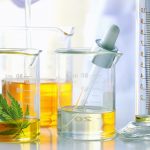Our goal is to provide you with the most relevant, and digestible information possible in the realm of cannabidiol.

Our goal is to provide you with the most relevant, and digestible information possible in the realm of cannabidiol.

Our goal is to provide
you with the most relevant,
and digestible information possible
in the realm of cannabidiol.

Our goal is
to provide you with
the most relevant,
and digestible information
possible in the realm
of cannabidiol.
Resources
Very few health supplements have come onto the market with as much fervor as cannabidiol. In recent years, many people have turned to the natural benefits provided by the much maligned and marginalized hemp plant. Sure, hemp creams, shampoos, and of course edible seeds have been en vogue for years, but there is still an overabundance of confusing and conflicting information regarding hemp and the cannabinoids contained within.






Our goal is to provide you with the most up-to-date, relevant, and digestible information possible in the realm of cannabidiol. But first, let’s start with the basics anybody interested in the health and science of CBD should eventually know. On this page, you will discover:
What CBD really is
The difference between CBD and THC
The difference between marijuana and industrial hemp
Whether CBD is legal or not
Some of the mainstream buzz surrounding CBD
FAQ
CBD is a completely natural substance with a long history of use that can be consumed in a variety of ways.
Cannabidiol is found in the cannabis plant and is 100% natural. Depending on the growing habits of particular farmers, CBD could be considered organic as well. It is not fabricated in a lab by humans, it is grown and occurs naturally in many parts of the world. It is a non-toxic, non-psychoactive substance that has no potential for abuse and there has been no recorded lethal dose, ever.
The use of hemp for healing purposes dates back to the third millennium BCE in the Far East. It was only studied extensively in the Western World many centuries later, in the early 1800s, by the Irish scientist William B. O’Shaughnessy. The cannabis plant has since taken a beating in terms of public and legal perception but is now garnering significant interest in the scientific community for its potential health applications.
Cannabidiol is extracted in oil form from the cannabis plant. From there, it can be left in oil form to be administered by dropper, “smoked” in a vaporizer (called ‘vaping’), or added to food or drinks. CBD oil can also be made into a paste that can be consumed as a food or even put into capsules that can be swallowed. Another, more novel delivery of CBD is for it to be turned into a particulate – a light powder that can then be pressed into tablets. This water soluble tablet form provides more bioavailability for your body, which means a greater absorption rate than oils, which is ultimately more efficient.
Both cannabidiol (CBD) and tetrahydrocannabinol (THC) are cannabinoids that come from the marijuana plant. To put it simply, the most obvious difference is the fact that THC can make you high, and CBD does not.
Over the past several decades, growers of cannabis have steadily bred their plants to maximize the THC levels to cater to the recreational crowd. Only until recently have cannabis farmers begun to re-introduce more CBD-rich varieties into their crops due to the vast amount of knowledge emerging about the possible health benefits of cannabidiol.
Differences between the two cannabinoids also extends to their side effects when consumed. Since THC causes a psychotropic effect (the ‘high’), symptoms such as anxiety, paranoia, drowsiness, and dry mouth come with its use.. THC consumption carries with it other side effects as well, such as impaired driving and dependency. On the other hand, current research shows that CBD is in fact safe for human and animal consumption, with no significant side effects.
Both cannabidiol (CBD) and tetrahydrocannabinol (THC) are cannabinoids that come from the marijuana plant. To put it simply, the most obvious difference is the fact that THC can make you high, and CBD does not.
Over the past several decades, growers of cannabis have steadily bred their plants to maximize the THC levels to cater to the recreational crowd. Only until recently have cannabis farmers begun to re-introduce more CBD-rich varieties into their crops due to the vast amount of knowledge emerging about the possible health benefits of cannabidiol.
Differences between the two cannabinoids also extends to their side effects when consumed. Since THC causes a psychotropic effect (the ‘high’), symptoms such as anxiety, paranoia, drowsiness, and dry mouth come with its use.. THC consumption carries with it other side effects as well, such as impaired driving and dependency. On the other hand, current research shows that CBD is in fact safe for human and animal consumption, with no significant side effects.
To most, the cannabis plant is the one that people smoke to get high. But there are actually different varieties of the cannabis sativa plant that have been widely used for centuries for several purposes.
The answer to this is complicated, so to simplify, think of CBD being from industrial hemp and THC is from marijuana plants. While hemp and marijuana are both from the cannabis sativa plant, industrial hemp has been bred to a contain a near zero amount of THC. Its physical form has been specifically bred to be taller to provide more material for fiber for rope and clothing, hemp oils, animal feed, and other practical uses. The lower-growing, more flowery, and higher in THC version of cannabis sativa is cultivated primarily for recreational purposes.
Welcome to another confusing issue surrounding the cannabis plant. The answer to whether or not CBD is legal is that it depends on which plant the CBD was derived from, where the plant was grown, and how the product is marketed.
Since marijuana is considered a Schedule I narcotic in the United States, cannabidiol taken from marijuana is considered to be in direct violation of the Controlled Substances Act and is illegal. However, if the CBD in question is a product of industrial hemp, it is considered legal. As you read above in the marijuana vs. industrial hemp section, industrial hemp has been cultivated to contain little to no THC nor intoxicating effect. Hemp isn’t scheduled under the Controlled Substances Act, so any CBD taken from industrial hemp cannot be enforced by the Drug Enforcement Agency (DEA).
It is federal crime to grow hemp in the US without a permit from the DEA (with the exception of locations designated by the 2014 Farm Bill), so by default, any American-produced CBD is illegal. Ironically, though, it is completely legal to import hemp into the United States. In fact, the US imports over $500M in hemp each year. If the CBD is derived from industrial hemp not grown in the US, it is considered to be legal.
The Federal Drug Administration (FDA) has recently begun to crack down on the CBD market, or more specifically, the marketing of CBD. In 2015, the FDA served warning letters to several companies making medical and therapeutic claims about CBD. Essentially, it is legal to market and sell CBD, but it is illegal to post any information that may lead a consumer to believe it is a miracle cure for a wide range of ailments.
You can google CBD and get millions of hits in less than a second. Among these links are a whole host of anecdotal accounts, like what cannabidiol did for this person or that person’s health issues. You will also find scientific records on clinical trials of CBD and their effects. Either way, in the information age, an abundance of knowledge is available to be gained, even in the relatively new era of cannabidiol.
Usually when a new health trend emerges, little public acceptance is gained simply by personal stories on forums or blogs or claims made by companies attempting to sell a product, and for good reason – it’s just not completely trustworthy. But when someone famous wades in to the field, that’s when many more Americans begin to take notice.
Enter Raphael Mechoulam, the Israeli organic chemist who has spent a lifetime in the study of marijuana. Though certainly not a household name, his advances in the cannabis field have been an inspiration to a generation of proponents of medical marijuana and CBD.
More recently, a figure has appeared that has taken cannabidiol awareness to an entirely new level, especially in America. Dr. Sanjay Gupta, Emmy-award winning chief medical correspondent for CNN, did an about-face on his stance on marijuana. The world took notice with his documentary series, “Weed”, on CNN.
The list of famous people involved in either CBD, medical marijuana, or the full legalization of cannabis is large and growing. The cannabidiol industry has experienced a substantial increase in not only awareness, but product research and development. It is a certainty that more and more CBD information will be made public from more reputable sources in the coming years. Until then, please “consider the source”. The internet is obviously the world’s best and largest platform for public knowledge and opinion, but said knowledge and information can be incorrect or misleading. We recommend you to err on the side of caution and follow the scientific path to true knowledge, instead of just the industry buzz.
